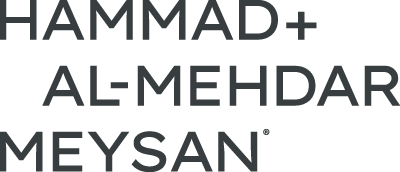
Education in Saudi Arabia has come a long way over the past few decades. In the 1970s, only 7,000 students were enrolled in Saudi universities and today that figure stands at over 1 million. There has been a concerted effort by the government to provide education for all its citizens, and the results are evident. The primary education enrolment rate has increased dramatically, and the country now boasts several world-class institutions of higher learning.
There are still some challenges to be addressed, however. The quality of education remains uneven, with attainment levels still lagging some of the leading developing nations. COVID-19 also put a strain on the sector as schools were forced to close, meaning students had to learn remotely. Nevertheless, the future looks bright for Saudi Arabia’s education sector.
Saudi Private Sector Education – A Growing Industry
The Saudi private sector has been playing an increasingly important role in education over the past few years. As part of Vision 2030, the government is aiming to increase the proportion of students in private schools to take the strain off public funding and boost attainment levels.
Saudi Arabia’s exceptionally young population has increased the demand for good-quality schooling, and many parents are now willing to pay for private education. This has created opportunities for a number of international school chains to enter the market. By the year 2025, it’s anticipated that there will be a need for an additional 980 private schools to support the 2.1 million new school seats that will be required. In 2018, private school enrolment sat at 13%, but by the year 2025, this will likely increase to 15% to match the 3.5% annual increase in the total number of Saudi students. As a result of these factors, the private education sector is expected to grow at a CAGR of 11% until 2026.
As part of the government’s plan to increase private participation to 25% of the education sector, they have created an “independent schools” program. This program aims to make 2,000 public schools independent, meaning they have full autonomy over their administration, financial support, and curriculum. It opens up even more opportunities for private investment and management of public schools.
Current Challenges Facing The Saudi Education Sector
Saudi Arabia has typically fallen behind its Gulf neighbours when it comes to quality of education. However, government efforts are starting to have a positive effect, and the country is now ranked 35th place globally for quality of education (up from 45th in 2020). However, attainment levels remain relatively low when compared to other nations.
To tackle this issue, the Saudi government has funnelled one-fifth of their budget into the education sector and made steps to increase private sector participation in the market. Their efforts were somewhat hampered by the COVID-19 pandemic, which forced students to switch to online home-based learning. This meant private schools had to drop their fees, resulting in reduced funding and staffing issues.
Key Considerations For Private Educational Institutes
In 2017, the Saudi government opened the private education sector to 100% foreign ownership and investment. This means there are now plenty of opportunities for foreign businesses to get involved in the education sector without the requirement of a local partner.
In the same year, the government announced new regulations under the Tadarruj system to regulate the building requirements for private schools operating in the Kingdom. By 2018, over 113 private schools were shut down for not abiding by these new regulations and operating out of buildings not designed for educational activities. Private schools are now required to wholly own their school buildings in order to be granted the appropriate licensing. Their premises must also fulfil a number of criteria to ensure they are fit for purpose.
The government recently announced that by the end of 2022, the Human Resource Development Fund (HRDF) would withdraw their funding support for Saudi citizen teachers. Until now, the government had been paying up to 50% of Saudi teachers’ salaries. This funding program was previously initiated after a Saudi citizen minimum wage was introduced, but schools must now start paying these salaries in full. This may result in a fee increase to combat the shortfall in funding.
The government has made it a priority to address the issues affecting educational attainment within the Kingdom and is working hard to ensure that Saudi Arabia’s education sector continues to develop and improve. In the coming years, we can expect to see even more progress in this vital area.
Thriving in Saudi Arabia – key considerations
Private institutes who are considering entering the education sector will need to consider a multitude of elements, which include:
Incorporation – navigating the registration structure, considering your location, core age demographic which you are targeting, incorporation legal requirements, regulatory legal approvals,
Funding & Finance – the financial resources required to incorporate and operate across Saudi Arabia, whether you should consider a joint venture or merger, feasibility and due diligence assessments, banking structure across the country
Real estate – land law considerations, development, and leasing requirements, musataha agreements with government entities and developers.
Construction and infrastructure – construction laws, operating and maintaining of new campuses and student accommodation.
Employment – contracts, review of HR policies, employment laws.
Technology – technology procurement, outsourcing arrangements, licensing agreements.
Our education specialists at Hammad & Al-Mehdar have been supporting the education sector and its related entities for decades and have delivered the full lifecycle of legal and corporate services for its clients.
To discuss your education entity contact us.
